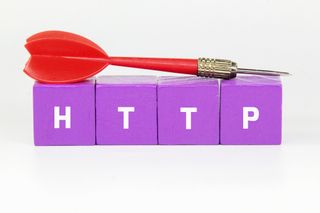How to Improve Website Speed? 8 Tips to Make Your Site Faster
Is your website’s speed slow? This can significantly impact SEO, as page speed is a crucial aspect of user experience, and Google’s algorithm takes it into account. If you’re looking for simple and effective tips on how to improve website speed, this article covers 8 strategies we always use to boost our page speed.
Additionally, we’ll explain why website speed is so important for both SEO and UX, as well as how to check your website’s speed. Let’s dive in!

How to Check Website Speed?
If you don’t know if your website speed is good or not (though we doubt this, as we all check Search Console on a daily basis), you can check if your website speed is low through various tools.
As we have already mentioned, if you consult Google Search Console, you can see there if your site has performance issues that may be affecting speed. The “Core Web Vitals” report provides data on how your website performs on key metrics like Largest Contentful Paint (LCP), First Input Delay (FID), and Cumulative Layout Shift (CLS). These factors are important indicators of speed and user experience.
However, if you want more detailed insights, you can also use tools like:
- Google PageSpeed Insights – Offers both desktop and mobile page speed tests with recommendations for improvement.
- GTmetrix – Provides a detailed analysis of page performance, including load times and recommendations for optimization.
- Pingdom – Tests your website speed from multiple locations and gives you a performance grade.
- WebPageTest – Offers advanced options to test speed from different browsers, devices, and connection types.
These tools provide clear metrics and actionable recommendations that can help you understand how to improve the website speed of your site. However, if you’re looking for simple and effective suggestions, keep reading.
8 Effective Tips on How to Increase Website Speed
After years of creating and managing websites, we’ve encountered slow-loading sites on several occasions. If you’re experiencing that right now, don’t worry—it’s quite easy to fix. Here are our favorite tips on how to improve website speed, whether you’re a beginner or a pro, that are both simple and effective.

1️⃣ Optimize Images
Images are crucial to make a site look nice, structured, and appealing to users, but uploading images that haven’t been previously optimized can overload your site and make it load very slowly. To avoid this, every time you upload an image, compress it and make it as light as possible without compromising its visual quality.
If you didn’t do that and already have a website full of unoptimized images, it’s time to go back and optimize them. You can use tools like ShortPixel, TinyPNG or ImageOptim to compress images without losing quality. Additionally, consider switching to more efficient formats like WebP, which offers high-quality images at a smaller file size.
2️⃣ Don’t Use Page Builders
If this is not your first time reading us, you might know that we are not fans of page builders like Divi, Beaver, etcetera. These types of tools overcharge websites, and even though they can make your website look more visually appealing, the cons often outweigh the pros.
These tools often overload websites with unnecessary code, significantly impacting page speed. Page builders generate bloated HTML, CSS, and JavaScript, leading to longer load times. Page builders also add extra HTTP requests and inline styles, which increase rendering delays. As a result, websites built with these tools often struggle to achieve optimal performance scores on speed testing tools like Google PageSpeed Insights or GTmetrix.
For a faster website, it’s best to use a lightweight theme and custom-built layouts with clean, optimized code. This ensures minimal overhead, faster loading times, and a better user experience.

3️⃣ Optimize Code
Even if you’re not using page builders, sometimes when building a site, you may overwrite code and add unnecessary characters, spaces, and comments. This can make your website load slowly, making users wait longer than they should.
To avoid this, make the code lighter by minifying CSS, JavaScript, and HTML. Minification removes unnecessary elements without affecting functionality, helping your site load faster and improving overall performance. You can do this by yourself, or if you’re not familiar with coding or don’t have enough coding experience, use tools like UglifyJS for JavaScript, CSSNano for CSS, or HTMLMinifier for HTML to automate the process.
4️⃣ Remove Plugins
Usually a rookie’s mistake, but we all sometimes do it. Plugins are very useful, we know that, but too many of them can directly affect how your website works. By installing too many plugins on your site, you will slow down its performance, as each plugin adds extra code, HTTP requests, and database queries, all of which increase load times.
Plugins can also load external resources like scripts and stylesheets, which can block rendering and delay the page load. The more plugins you use, the heavier the site becomes, which negatively impacts both desktop and mobile speed.
To improve website speed, it’s crucial to have as few plugins as you can and ensure that each one is essential. Regularly check which plugins you have and remove those that are non-essential and, if you can, replace them with custom code or fewer, more efficient alternatives.
5️⃣ Reduce Redirects
Very few people know this, but making too many redirects on your website can affect the page speed. This is because each redirect requires an additional HTTP request and response cycle, which adds extra time for the browser to process. As the number of redirects increases, so does the time it takes for the page to load, resulting in slower performance.
In particular, 301 redirects (permanent redirects) can be especially impactful, as they trigger multiple round trips between the browser and server. Each of these redirects creates delays that can accumulate, making your website feel sluggish.
To avoid this, audit your redirects regularly and try to minimize them. Instead of relying on multiple redirects, update URLs directly, and ensure that internal links point to the final destination URL.

6️⃣ Implement Lazy Loading
If your website has lots of videos and images that you refuse to remove because they are key to your content, implementing lazy loading can help improve page speed without sacrificing user experience.
Lazy loading ensures that images and videos are only loaded when they come into the user’s view on the screen, rather than all at once when the page initially loads. This reduces the amount of data being loaded upfront and significantly improves the first contentful paint (FCP) time, making your website appear faster.
For sites with long pages or numerous media elements, lazy loading can drastically reduce initial page load times, decrease bandwidth usage, and provide a smoother browsing experience. You can easily implement lazy loading with JavaScript libraries like Lazysizes or use native HTML attributes like loading=”lazy” for images and iframes.

7️⃣ Reduce HTTP Requests
As we have already mentioned throughout this post, HTTP requests are quite important when talking about page speed. HTTP requests are made every time a browser needs to retrieve an element from a server, such as images, CSS files, JavaScript files, fonts, and other resources. The more requests a page makes, the longer it takes to load.
By reducing these requests, you can significantly speed up your website. This can be achieved by combining files, using CSS sprites, eliminating unnecessary resources, and inlining critical CSS. Fewer HTTP requests mean less time spent waiting for resources to load, resulting in a faster and smoother user experience.
8️⃣ Upgrade Your Hosting Plan
We’ve talked about what you’ve added to your website and how it’s built, but one thing that is at the core of your site and can also affect page speed is your hosting. Your hosting plan plays a significant role in how fast your website loads, especially when it comes to server response times and how well it can handle traffic spikes.
If you’re using shared hosting, you may experience slower speeds as resources are divided among multiple websites on the same server. Upgrading to a more robust hosting solution, such as VPS (Virtual Private Server) or dedicated hosting, can provide faster response times and improved overall performance.
Additionally, if your hosting provider offers features like SSD storage, CDN integration, and PHP optimization, these can further enhance speed. A good hosting plan ensures your website has the necessary resources to run smoothly, especially as it grows.
Bonus: Create your site with Hubspot
The vast majority of the problems listed here are related to websites created in WordPress (such as excessive plugins, bloated code, and slow loading times).
Many developers and marketing professionals are migrating to HubSpot, as this platform offers its own optimized page builder, eliminating common performance issues like poor optimization and low speed. With built-in speed enhancements, security, and seamless integrations, HubSpot ensures a faster, more efficient website experience—without the hassle of manual fixes.
So, if you haven’t built your site yet or have the opportunity to migrate it, don’t hesitate—HubSpot is the new black.
Conclusion
In conclusion, improving your website speed is essential for both SEO and user experience. By implementing the tips we’ve shared, such as optimizing images, reducing HTTP requests, and upgrading your hosting plan, you can significantly enhance your site’s performance. Regularly checking your website speed and making necessary adjustments will keep your site running smoothly, ensuring a better experience for visitors and improved rankings on search engines. Start optimizing today, and watch your website’s speed—and success—grow!